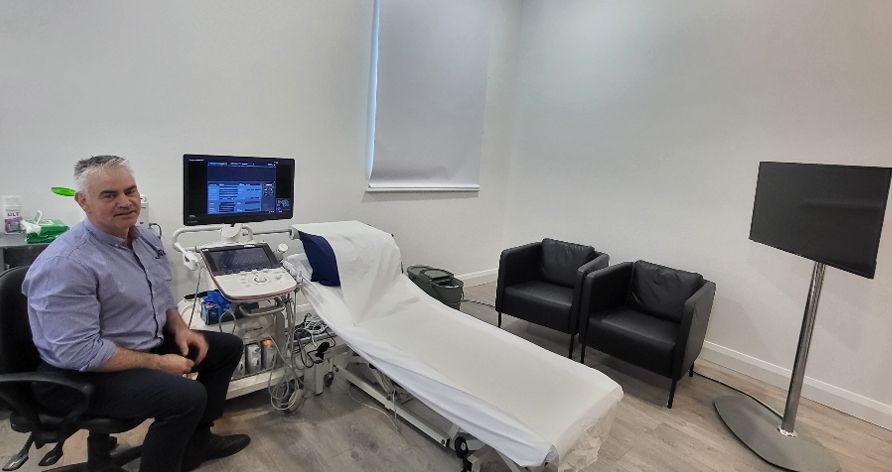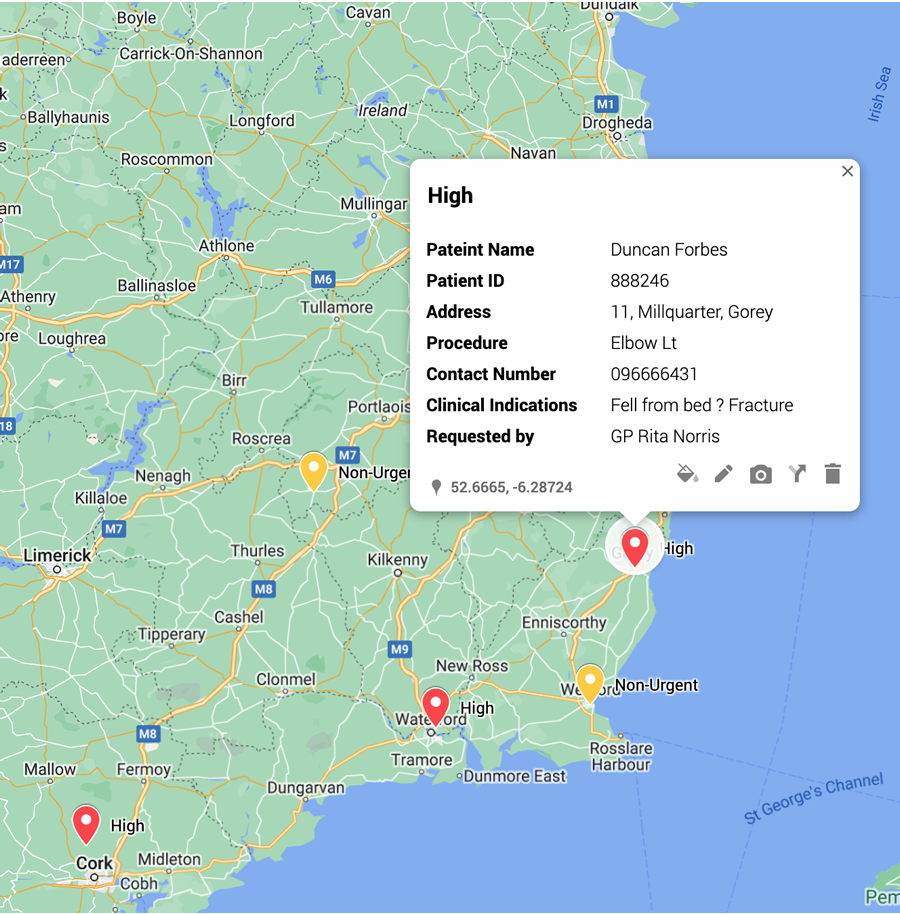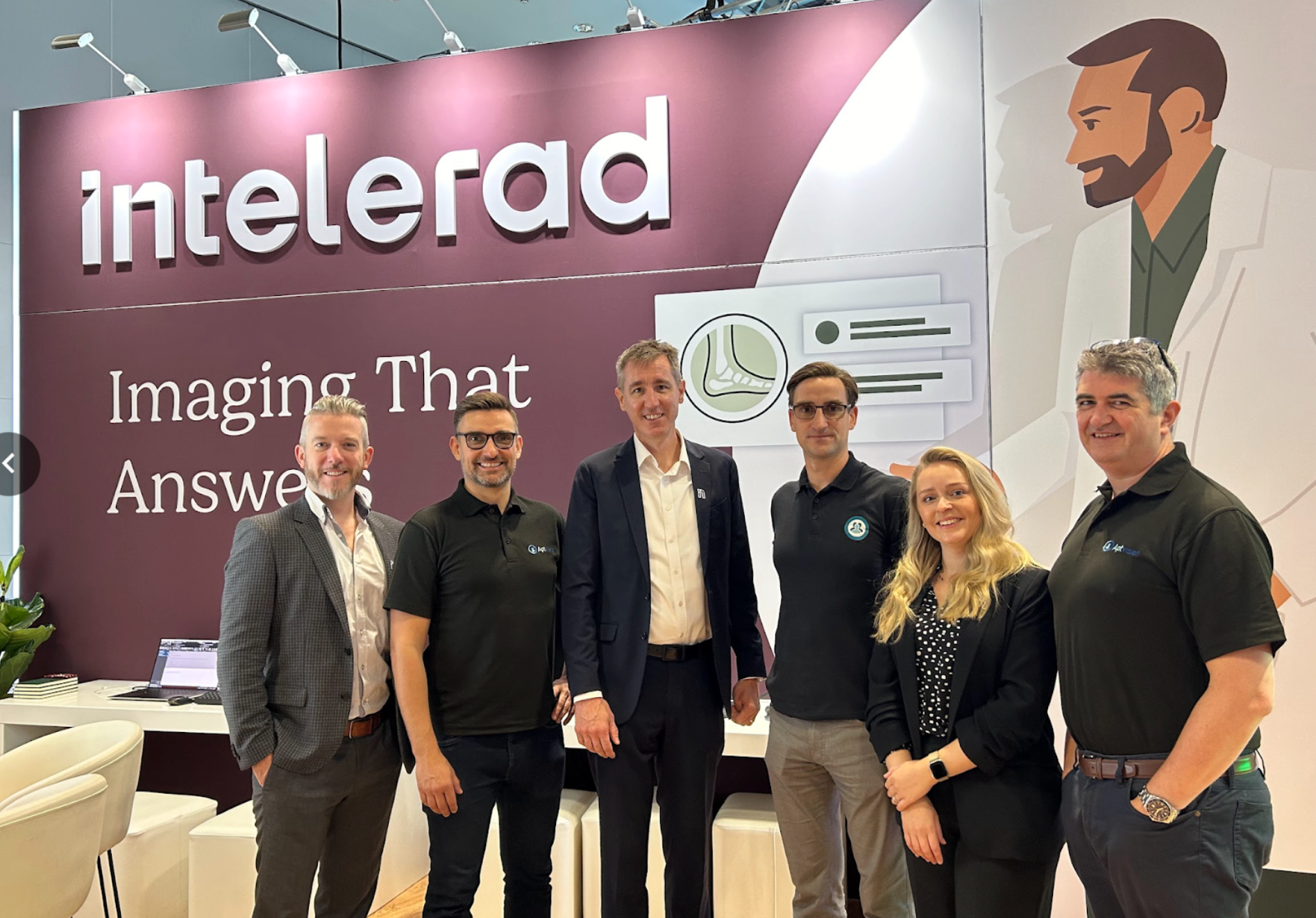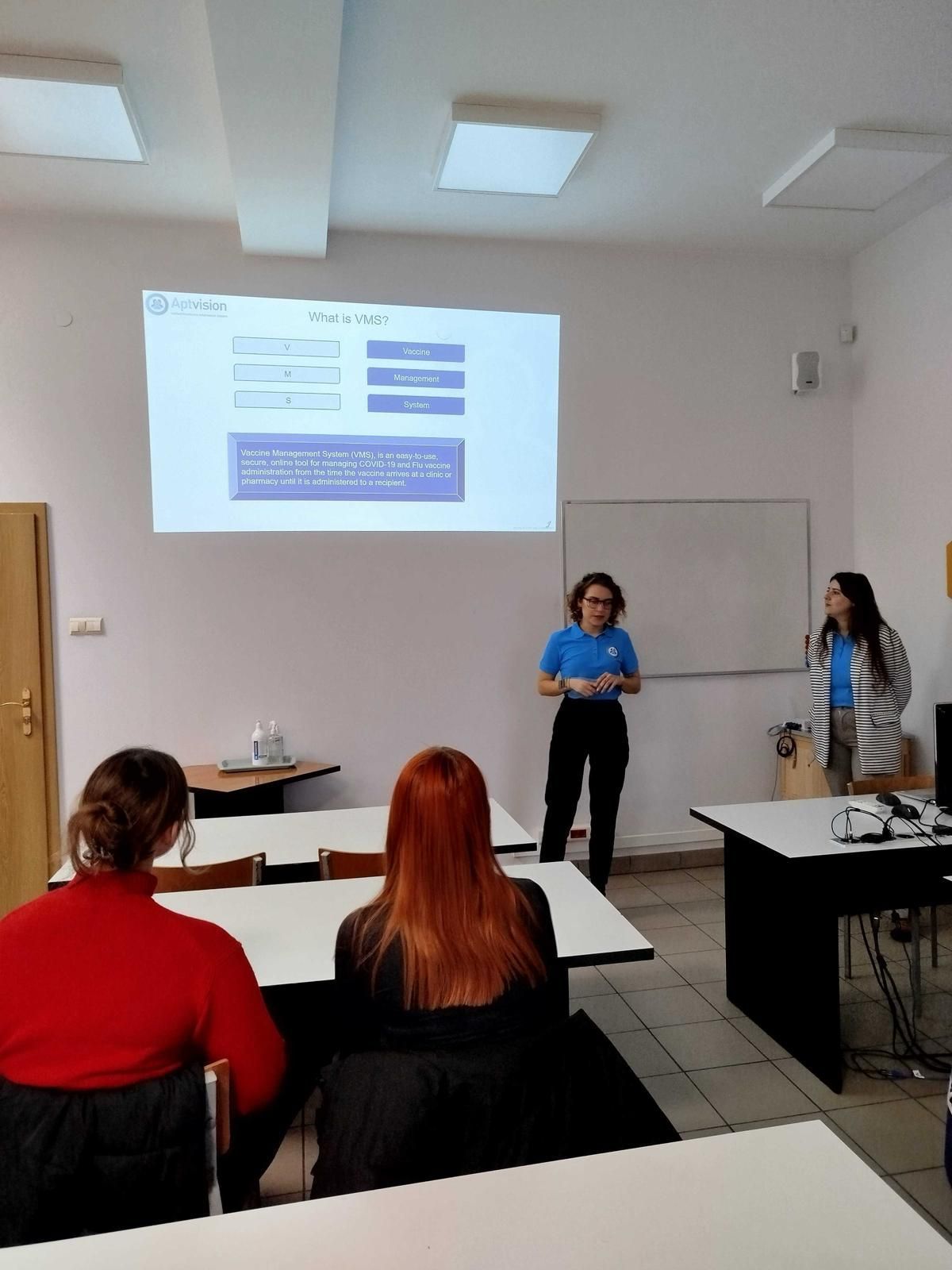From Frustration to Innovation: The Future of RIS UX with Aptvision

Have you ever opened a website or a system and had a feeling that you went back in time?
Clunky interfaces, endless clicks, and outdated designs… Well, that’s what a lack of UX design looks like. And that’s exactly what Aptvision wants to avoid and fight with.
Thinking about the Radiology Information System you might think it’s only about Radiologists, Radiographers, and other hospital staff. Well… That’s not entirely true. A functional and user-friendly RIS will bring benefits to patients as well, allowing them to:
- Manage their own bookings using geolocation functions of their mobile devices
- Receive reminders and instructions on preparation and directions
- Complete pre-attendance questionnaires such as MRI checklists
- Review information videos about procedures, all with the goal of improving user experience, reducing admin burden on imaging departments and reduce DNA's
- Patients can also view and share their reports and images
- Where relevant, payments can also be captured or insurer information entered
Referring Clinicians are also not forgotten, with the Ordercoms module providing:
- Easy creation and navigation of patients and requests
- Alerting for urgent findings
- Closed loop acknowledgement of unexpected and urgent findings
We also now provide fully paperless workflows so its vital that Radiographers can use the mobile web app on a tablet to:
- correctly identify a patient
- complete and digitally sign any forms
- easily review previous reports and images
- capture dose, consumables and procedure notes
So what does Aptvision do to make specific user personas happy?
Our top priority is making our systems truly usable—but what does that actually mean?
To us, a state-of-the-art RIS should follow these seven essential principles.
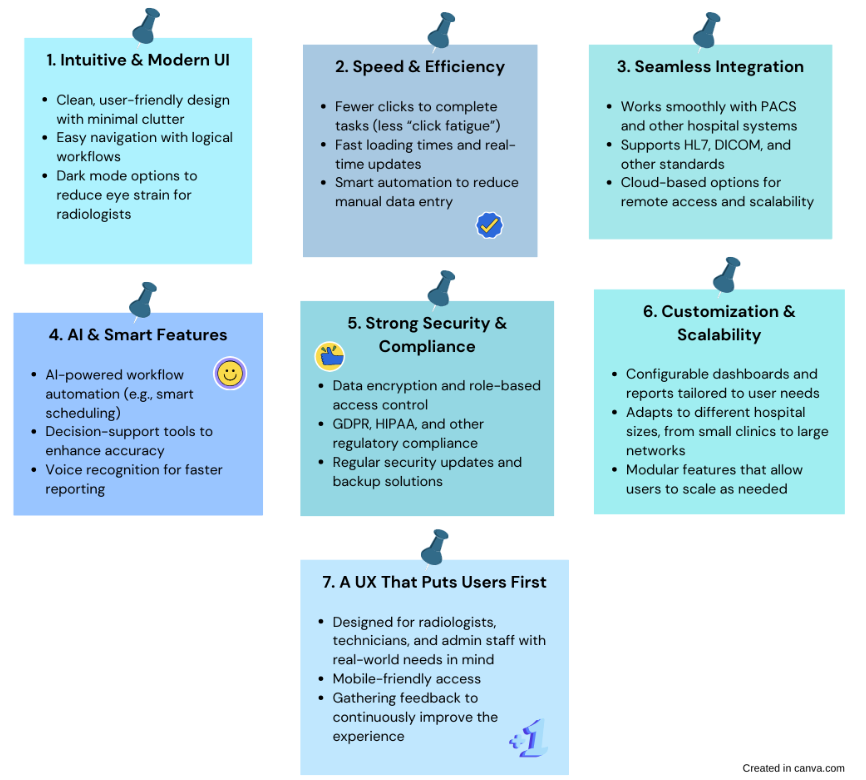
Talking the talk is easy, but how do we walk the UX walk?
First and foremost, we do our homework. We stay on top of the latest trends and explore how to integrate them effectively. Market research is key—technology is constantly advancing, and so are we!
Next, we prioritize user feedback. We ask, we listen, and we search for the best ways to enhance or introduce new features. After all, users know what they
need, and we know how to bring that need to life. Feedback is invaluable to us because we’re designing a system
for our clients, not for ourselves.
We don’t do anything blindly, instead using data gathering techniques to obtain and analyse user needs. We think together, write down ideas, do mock-ups, and discuss to find the best possible solution. And then we implement it in the test environment, usually working with a sponsor client to get immediate feedback. We use UX design thinking to make sure we’re user-friendly, efficient, and intuitive—creating a system that feels natural, reduces workload, and enhances the overall radiology workflow for the user.
At Aptvision, we are mindful of our audience, accessibility is a core part of our design process, knowing that patients, administrators and clinical staff will use the system. We follow
Web Content Accessibility Guidelines (WCAG) to ensure our RIS system is inclusive and user-friendly for everyone, including those with disabilities. Compliance isn’t just a checkbox for us—it’s a commitment to making healthcare technology accessible to all.
Also, we speak the language of seamless workflows—literally! 🌍 Our RIS system is available in
English, Polish, Romanian, Danish, and now Spanish, ensuring that radiologists and healthcare teams can work comfortably in their native language. Because software should adapt to its users, not the other way around! Whether you're scheduling exams in Madrid or generating reports in Copenhagen, we’ve got you covered. And who knows? More languages may be just around the corner… 😉
And last but not least, we test. We test A LOT. It all starts with internal testing, where our QA team ensures everything functions smoothly and looks great. Then, our customers take over, and that’s when the real feedback pours in. We welcome every opinion with open arms.
At Aptvision, we don’t just talk about the future of RIS - we’re building it. By focusing on user-centric design, staying ahead of trends, and continuously improving based on real feedback, we’re crafting a system that users actually enjoy using. After all, a system that’s easy to use, efficient, and forward-thinking doesn’t just improve workflows - it improves care.
The future of radiology software is already here. And we’re just getting started.

Written by Aleksandra Kolasa
Aleksandra is a graduate of the University of Technology Lodz and is completing her Masters Degree in UX/UI design.
Aleksandra works within the Project Management Office of Aptvision and has led much of the design on the Aptvision Ordercom's module which is live in a large NHS Trust.

